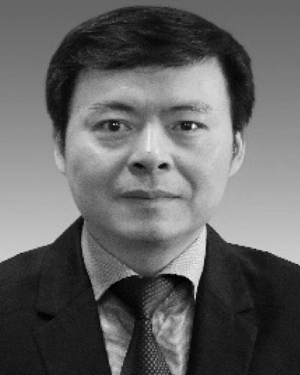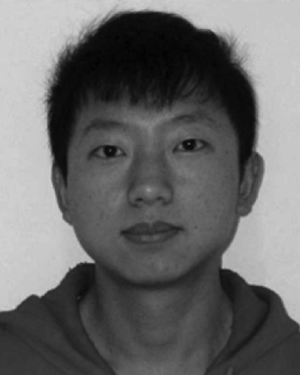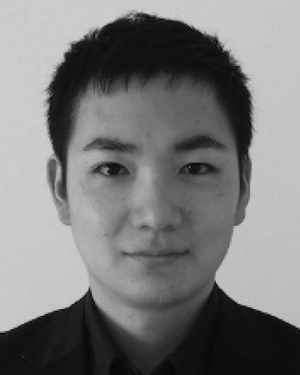Abstract:
Hyperspectral image super-resolution (HSI-SR) can be achieved by fusing a paired multispectral image (MSI) and hyperspectral image (HSI), which is a prevalent strategy. B...Show MoreMetadata
Abstract:
Hyperspectral image super-resolution (HSI-SR) can be achieved by fusing a paired multispectral image (MSI) and hyperspectral image (HSI), which is a prevalent strategy. But, how to precisely reconstruct the high spatial resolution hyperspectral image (HR-HSI) by fusion technology is a challenging issue. In this article, we propose an iterative regularization method based on tensor subspace representation (IR-TenSR) for MSI-HSI fusion, thus HSI-SR. First, we propose a tensor subspace representation (TenSR)-based regularization model that integrates the global spectral–spatial low-rank and the nonlocal self-similarity priors of HR-HSI. These two priors have been proven effective, but previous HSI-SR works cannot simultaneously exploit them. Subsequently, we design an iterative regularization procedure to utilize the residual information of acquired low-resolution images, which are ignored in other works that produce suboptimal results. Finally, we develop an effective algorithm based on the proximal alternating minimization method to solve the TenSR-regularization model. With that, we obtain the iterative regularization algorithm. Experiments implemented on the simulated and real datasets illustrate the advantages of the proposed IR-TenSR compared with the state-of-the-art fusion approaches. The code is available at https://github.com/liangjiandeng/IR_TenSR.
Published in: IEEE Transactions on Geoscience and Remote Sensing ( Volume: 60)
Funding Agency:

Research Center for Image and Vision Computing, School of Mathematical Sciences, University of Electronic Science and Technology of China, Chengdu, China
Ting Xu received the B.S. degree in mathematics and applied mathematics from the Mianyang Teachers’ College, Mianyang, China, in 2018. She is currently pursuing the Ph.D. degree in mathematics with the School of Mathematical Sciences, University of Electronic Science and Technology of China (UESTC), Chengdu, China.
Ting Xu received the B.S. degree in mathematics and applied mathematics from the Mianyang Teachers’ College, Mianyang, China, in 2018. She is currently pursuing the Ph.D. degree in mathematics with the School of Mathematical Sciences, University of Electronic Science and Technology of China (UESTC), Chengdu, China.View more

Research Center for Image and Vision Computing, School of Mathematical Sciences, University of Electronic Science and Technology of China, Chengdu, China
Ting-Zhu Huang (Member, IEEE) received the B.S., M.S., and Ph.D. degrees in computational mathematics from the Department of Mathematics, Xi’an Jiaotong University, Xi’an, China, in 1986, 1992, and 2001, respectively.
He is currently a Professor with the School of Mathematical Sciences, University of Electronic Science and Technology of China, Chengdu, China. His research interests include scientific computation and applic...Show More
Ting-Zhu Huang (Member, IEEE) received the B.S., M.S., and Ph.D. degrees in computational mathematics from the Department of Mathematics, Xi’an Jiaotong University, Xi’an, China, in 1986, 1992, and 2001, respectively.
He is currently a Professor with the School of Mathematical Sciences, University of Electronic Science and Technology of China, Chengdu, China. His research interests include scientific computation and applic...View more

Research Center for Image and Vision Computing, School of Mathematical Sciences, University of Electronic Science and Technology of China, Chengdu, China
Liang-Jian Deng (Member, IEEE) received the B.S. and Ph.D. degrees in applied mathematics from the School of Mathematical Sciences, University of Electronic Science and Technology of China (UESTC), Chengdu, China, in 2010 and 2016, respectively.
He is currently a Professor with the School of Mathematical Sciences, UESTC. From 2013 to 2014, he was a Joint-Training Ph.D. student with Case Western Reserve University, Clevelan...Show More
Liang-Jian Deng (Member, IEEE) received the B.S. and Ph.D. degrees in applied mathematics from the School of Mathematical Sciences, University of Electronic Science and Technology of China (UESTC), Chengdu, China, in 2010 and 2016, respectively.
He is currently a Professor with the School of Mathematical Sciences, UESTC. From 2013 to 2014, he was a Joint-Training Ph.D. student with Case Western Reserve University, Clevelan...View more

Department of Complexity Science and Engineering, Graduate School of Frontier Sciences, The University of Tokyo, Chiba, Japan
RIKEN Center for Advanced Intelligence Project, Tokyo, Japan
Naoto Yokoya (Member, IEEE) received the M.Eng. and Ph.D. degrees from the Department of Aeronautics and Astronautics, the University of Tokyo, Tokyo, Japan, in 2010 and 2013, respectively.
He was an Assistant Professor with the University of Tokyo from 2013 to 2017. From 2015 to 2017, he was an Alexander von Humboldt Fellow, working with the German Aerospace Center (DLR), Oberpfaffenhofen, and Technical University of Muni...Show More
Naoto Yokoya (Member, IEEE) received the M.Eng. and Ph.D. degrees from the Department of Aeronautics and Astronautics, the University of Tokyo, Tokyo, Japan, in 2010 and 2013, respectively.
He was an Assistant Professor with the University of Tokyo from 2013 to 2017. From 2015 to 2017, he was an Alexander von Humboldt Fellow, working with the German Aerospace Center (DLR), Oberpfaffenhofen, and Technical University of Muni...View more

Research Center for Image and Vision Computing, School of Mathematical Sciences, University of Electronic Science and Technology of China, Chengdu, China
Ting Xu received the B.S. degree in mathematics and applied mathematics from the Mianyang Teachers’ College, Mianyang, China, in 2018. She is currently pursuing the Ph.D. degree in mathematics with the School of Mathematical Sciences, University of Electronic Science and Technology of China (UESTC), Chengdu, China.
Ting Xu received the B.S. degree in mathematics and applied mathematics from the Mianyang Teachers’ College, Mianyang, China, in 2018. She is currently pursuing the Ph.D. degree in mathematics with the School of Mathematical Sciences, University of Electronic Science and Technology of China (UESTC), Chengdu, China.View more

Research Center for Image and Vision Computing, School of Mathematical Sciences, University of Electronic Science and Technology of China, Chengdu, China
Ting-Zhu Huang (Member, IEEE) received the B.S., M.S., and Ph.D. degrees in computational mathematics from the Department of Mathematics, Xi’an Jiaotong University, Xi’an, China, in 1986, 1992, and 2001, respectively.
He is currently a Professor with the School of Mathematical Sciences, University of Electronic Science and Technology of China, Chengdu, China. His research interests include scientific computation and applications, numerical algorithms for image processing, numerical linear algebra, preconditioning technologies, and matrix analysis with applications.
Dr. Huang is an Editor of the Scientific World Journal, Advances in Numerical Analysis, the Journal of Applied Mathematics, the Journal of Pure and Applied Mathematics: Advances in Applied Mathematics, and the Journal of Electronic Science and Technology, China.
Ting-Zhu Huang (Member, IEEE) received the B.S., M.S., and Ph.D. degrees in computational mathematics from the Department of Mathematics, Xi’an Jiaotong University, Xi’an, China, in 1986, 1992, and 2001, respectively.
He is currently a Professor with the School of Mathematical Sciences, University of Electronic Science and Technology of China, Chengdu, China. His research interests include scientific computation and applications, numerical algorithms for image processing, numerical linear algebra, preconditioning technologies, and matrix analysis with applications.
Dr. Huang is an Editor of the Scientific World Journal, Advances in Numerical Analysis, the Journal of Applied Mathematics, the Journal of Pure and Applied Mathematics: Advances in Applied Mathematics, and the Journal of Electronic Science and Technology, China.View more

Research Center for Image and Vision Computing, School of Mathematical Sciences, University of Electronic Science and Technology of China, Chengdu, China
Liang-Jian Deng (Member, IEEE) received the B.S. and Ph.D. degrees in applied mathematics from the School of Mathematical Sciences, University of Electronic Science and Technology of China (UESTC), Chengdu, China, in 2010 and 2016, respectively.
He is currently a Professor with the School of Mathematical Sciences, UESTC. From 2013 to 2014, he was a Joint-Training Ph.D. student with Case Western Reserve University, Cleveland, OH, USA. In 2017, he was a Postdoc with Hong Kong Baptist University (HKBU). In addition, he also stayed at Isaac Newton Institute for Mathematical Sciences, Cambridge University and HKBU for short visits. His research interests include the use of partial differential equations (PDE), optimization modeling, and deep learning to address several tasks in image processing, and computer vision, e.g., resolution enhancement and restoration. Find more articles and codes from: https://liangjiandeng.github.io/
Liang-Jian Deng (Member, IEEE) received the B.S. and Ph.D. degrees in applied mathematics from the School of Mathematical Sciences, University of Electronic Science and Technology of China (UESTC), Chengdu, China, in 2010 and 2016, respectively.
He is currently a Professor with the School of Mathematical Sciences, UESTC. From 2013 to 2014, he was a Joint-Training Ph.D. student with Case Western Reserve University, Cleveland, OH, USA. In 2017, he was a Postdoc with Hong Kong Baptist University (HKBU). In addition, he also stayed at Isaac Newton Institute for Mathematical Sciences, Cambridge University and HKBU for short visits. His research interests include the use of partial differential equations (PDE), optimization modeling, and deep learning to address several tasks in image processing, and computer vision, e.g., resolution enhancement and restoration. Find more articles and codes from: https://liangjiandeng.github.io/View more

Department of Complexity Science and Engineering, Graduate School of Frontier Sciences, The University of Tokyo, Chiba, Japan
RIKEN Center for Advanced Intelligence Project, Tokyo, Japan
Naoto Yokoya (Member, IEEE) received the M.Eng. and Ph.D. degrees from the Department of Aeronautics and Astronautics, the University of Tokyo, Tokyo, Japan, in 2010 and 2013, respectively.
He was an Assistant Professor with the University of Tokyo from 2013 to 2017. From 2015 to 2017, he was an Alexander von Humboldt Fellow, working with the German Aerospace Center (DLR), Oberpfaffenhofen, and Technical University of Munich (TUM), Munich, Germany. He is currently a Lecturer with the University of Tokyo and a Unit Leader with the RIKEN Center for Advanced Intelligence Project, Tokyo, Japan, where he leads the Geoinformatics Unit. His research is focused on the development of image processing, data fusion, and machine learning algorithms for understanding remote sensing images, with applications to disaster management.
Dr. Yokoya won first place in the 2017 IEEE Geoscience and Remote Sensing Society (GRSS) Data Fusion Contest organized by the Image Analysis and Data Fusion Technical Committee (IADF TC). He was the Chair (2019–2021) and a Co-Chair (2017–2019) of the IEEE GRSS IADF TC. He is an Associate Editor for the IEEE Transactions on Geoscience and Remote Sensing since 2021.
Naoto Yokoya (Member, IEEE) received the M.Eng. and Ph.D. degrees from the Department of Aeronautics and Astronautics, the University of Tokyo, Tokyo, Japan, in 2010 and 2013, respectively.
He was an Assistant Professor with the University of Tokyo from 2013 to 2017. From 2015 to 2017, he was an Alexander von Humboldt Fellow, working with the German Aerospace Center (DLR), Oberpfaffenhofen, and Technical University of Munich (TUM), Munich, Germany. He is currently a Lecturer with the University of Tokyo and a Unit Leader with the RIKEN Center for Advanced Intelligence Project, Tokyo, Japan, where he leads the Geoinformatics Unit. His research is focused on the development of image processing, data fusion, and machine learning algorithms for understanding remote sensing images, with applications to disaster management.
Dr. Yokoya won first place in the 2017 IEEE Geoscience and Remote Sensing Society (GRSS) Data Fusion Contest organized by the Image Analysis and Data Fusion Technical Committee (IADF TC). He was the Chair (2019–2021) and a Co-Chair (2017–2019) of the IEEE GRSS IADF TC. He is an Associate Editor for the IEEE Transactions on Geoscience and Remote Sensing since 2021.View more


